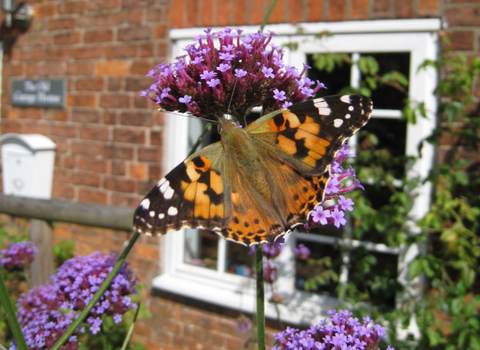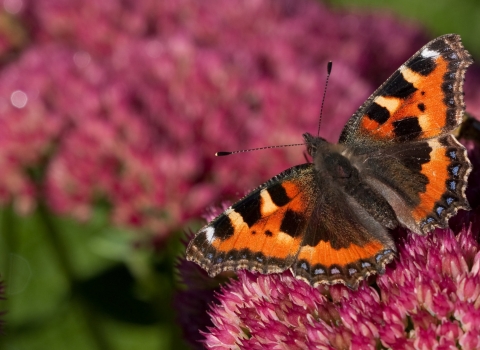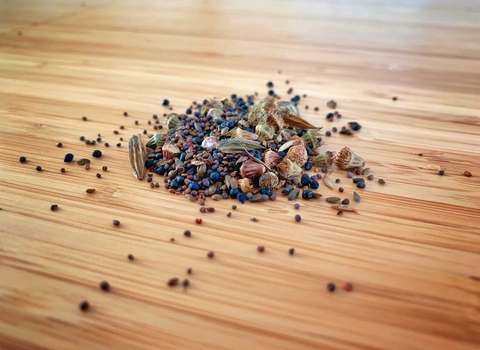Creating a pollinator garden
With wild habitats at risk, bees and other pollinators need us to provide a food source in our gardens, balconies, allotments and other outdoor spaces.
You can help by growing flowers that attract butterflies, bees and other pollinating insects to your garden throughout the year.
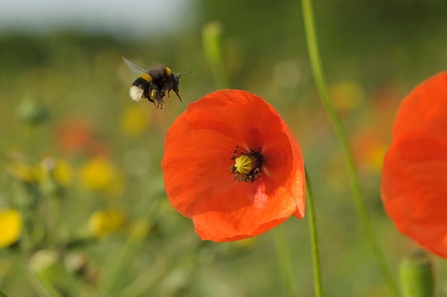
© Chris Gomersall/2020VISION
Know your soil
When planning a wildlife garden, it is important to know your soil type. Not all the plants listed below will be suitable for all soil types, and may not grow properly or die completely.
pH Test
A simple test to find out if your soil is acid, alkaline or neutral can be carried out using a soil testing kit from your local garden centre, which uses colour as an indicator.
The solution will turn yellow-orange for acid soil, green for neutral and dark green for alkaline soil. Most plants prefer a pH of 6.5 to 7 – the point where nutrients are most easily available.
Water retention
Clay and peat soils hold water better than sandy and chalk soils. This test will show if your soil will become waterlogged in wet weather, or dry out quickly in summer.
To Test The Water Retention Of Your Soil:
Fold a piece of kitchen paper into a funnel and place in a jar then fill a small measuring jug with a recorded amount of water. Place a tablespoon of dry soil in the funnel and add water to the centre of the soil. Stop adding water when the first drop falls into jar, noting how much water you have added. Wait until soil has drained. Measure the volume of drained water: if over half of the added water is recovered, your soil is well drained.
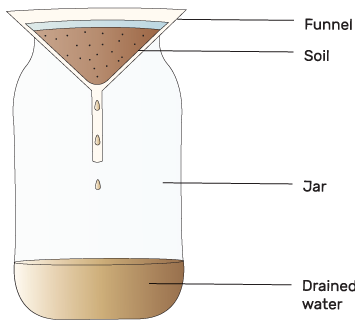
Wildlife friendly plants by season
Choose a mixture of seasonal flowering plants, bulbs, herbs, fruits, shrubs and trees to ensure a year round food source in your garden.
A list of readily available insect pollinated plants available from your local garden centre can also be found here.
Spring (March-May
- Barberry (shrub)
- Marsh marigold
- Cotoneaster (shrub)
- Crocus (spring-flowering)
- Erysimum ‘bowles mauve’ wallflower
- Cranesbill
- Hebes
- Honesty
- Oregon grape
- Native cowslip
- Native primrose
- Skimmia japonica (shrub)
- Forget-me-not
Spring bulbs
Plant in autumn
- Lily of the Valley Convallaria majalis
- Wild Garlic (Ramsons) Allium ursinum
- Snakeshead Fritillary Fritillaria meleagris
- Grape Hyacinth (native) Muscari neglectum
- Lesser Celandine Ranunculus ficaria
- Wild Daffodil Narcissus pseudonarcissus
- Snowdrops Galanthus nivalis
- Bluebells Hyacinthoides non-scripta
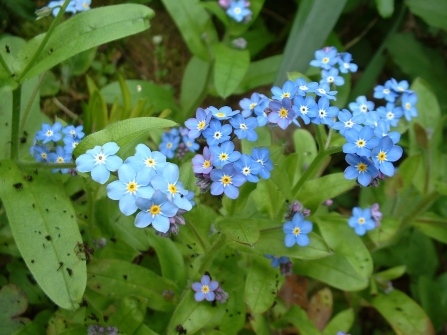
© Neil Wyatt
Summer (June-August)
- Yarrow
- Hollyhock
- Alliums
- Alkanet
- Angelica
- Poppy
- Thrift
- Borage
- Buddleja davidii (shrub)
- Common marigold
- Vipers bugloss
- Heather
- Honeysuckle
- Greater & lesser knapweed
- Cornflower
- Red valerian
- Cosmos
- Ice plant
- Sweet william
- Foxglove
- Common teasel
- Coneflower
- Blue eryngo
- Hemp agrimony
- Fuchsia
- Corn marigold
- Sunflower
- Hydrangea
- Jasmine
- Feld scabious
- Ox-eye daisy
- Ragged robin
- Evening primrose
- Jacob’s ladder
- Firethorn (shrub)
- Coneflower
- Salvia species
- Lamb’s ear
- Verbena bonariensis

© Chris Gomersall/2020VISION
Autumn (September-November)
Autumn flowering plants
-
Japanese anemone
- Michaelmas daisy
- Clematis
- Common ivy
- Salvia species
- Cyclamen
- Ivy
Spring bulbs to plant in autumn
- Lily of the Valley Convallaria majalis
- Wild Garlic (Ramsons) Allium ursinum
- Snake's-head Fritillary Fritillaria meleagris
- Grape Hyacinth (native) Muscari neglectum
- Lesser Celandine Ranunculus ficaria
- Wild Daffodil Narcissus pseudonarcissus
- Snowdrops Galanthus nivalis
- Bluebells Hyacinthoides non-scripta
- Crocus
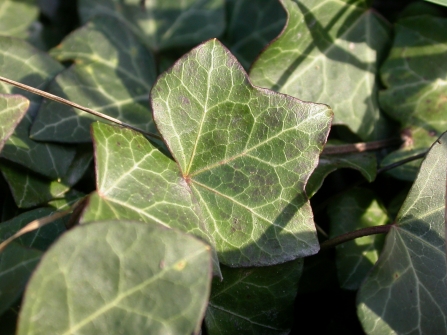
© Philip Precey
Winter (December-February)
- Crocus (winter flowering)
- Snowdrop
- Hellebores
- Honeysuckle
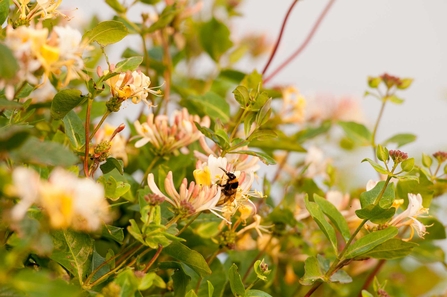
© Ross Hoddinott/2020VISION
How to grow a wildlife friendly...
- Vegetable garden (https://www.surreywildlifetrust.org/actions/how-grow-wildlife-friendly-vegetable-garden)
- Gravel garden (https://www.surreywildlifetrust.org/actions/how-make-gravel-garden-wildlife)
- Shrub garden (https://www.surreywildlifetrust.org/actions/how-make-shrub-garden-wildlife)
- Bog garden (https://www.surreywildlifetrust.org/actions/how-make-bog-garden)
- Costal garden (https://www.surreywildlifetrust.org/actions/how-make-coastal-garden)
- Woodland edge garden (https://www.surreywildlifetrust.org/actions/how-make-woodland-edge-garden-wildlife)
- Butterfly garden (https://www.surreywildlifetrust.org/actions/how-attract-butterflies-your-garden)
- Wildflower meadow (https://www.surreywildlifetrust.org/actions/how-make-seed-bomb)
- New build garden (https://www.surreywildlifetrust.org/actions/how-start-wildlife-garden-scratch)
Top tips |
|---|
| Grow a range of plants with different flowering times to ensure a year round food source for pollinators. |
| Avoid plants with double or multi-petalled flowers, which are hard for insects to access. |
| After annuals and perennials have died off, leave the seed heads throughout the winter to provide food and shelter for wildlife. |
| Never use pesticides on plants in flower - these will harm visiting pollinators. |

